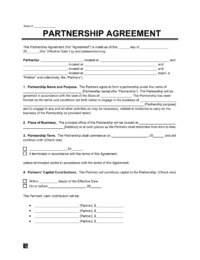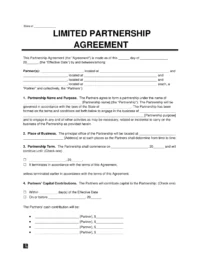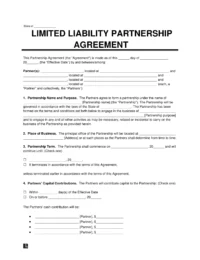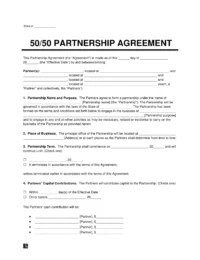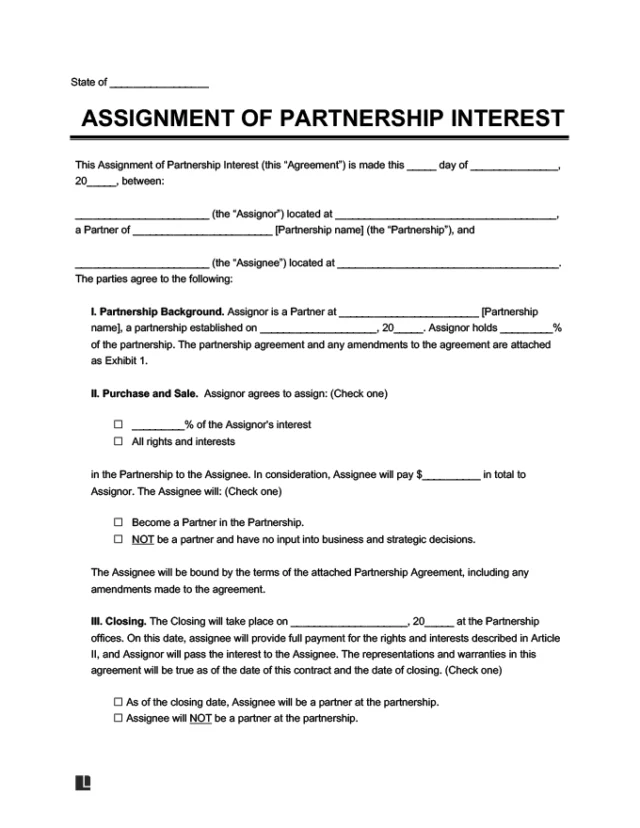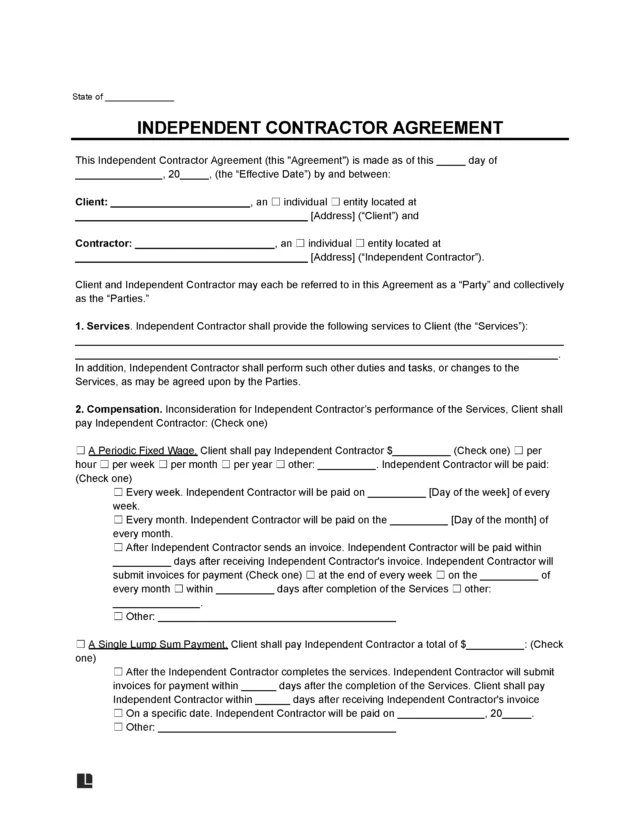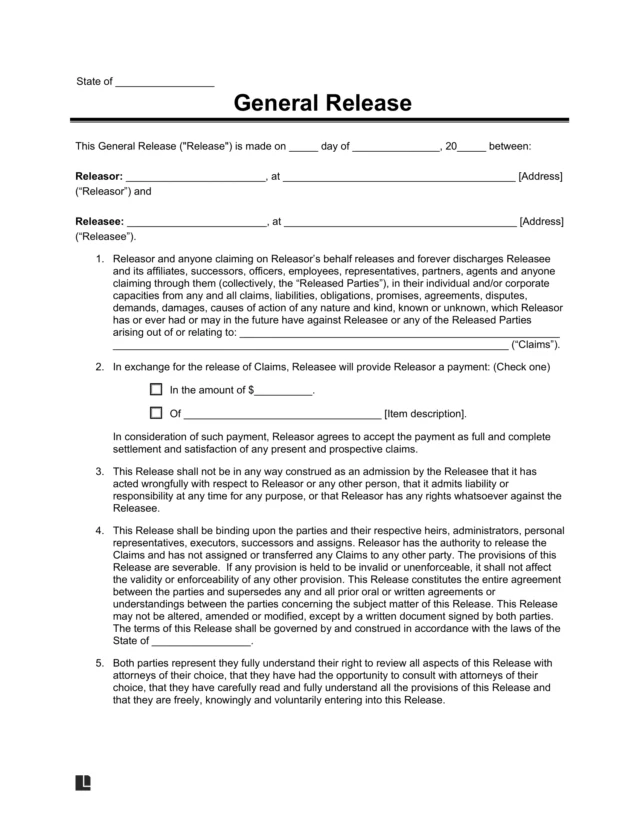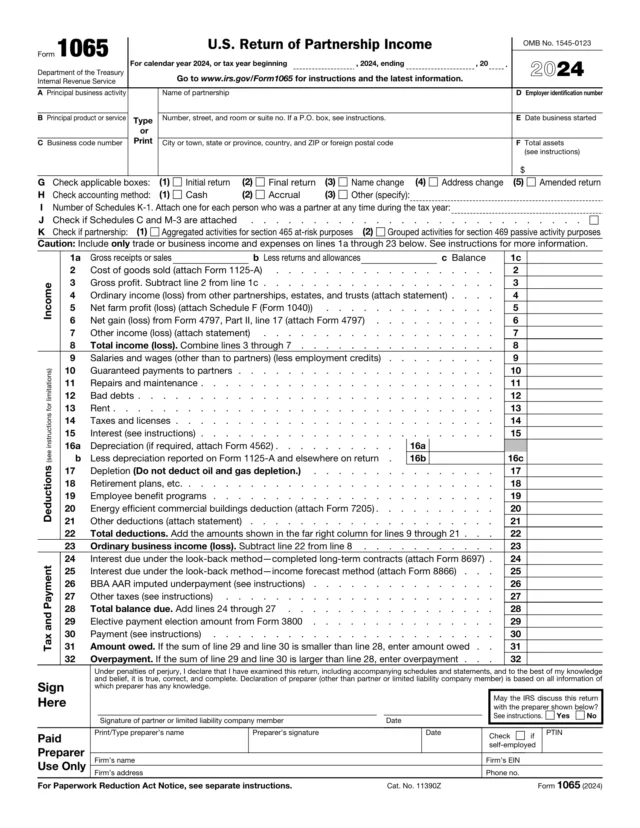What Is a Partnership Agreement?
A partnership agreement is a written contract between two or more people who run a business together. It explains each partner’s roles, responsibilities, ownership shares, and how profits and losses will be divided.
Having an agreement prevents misunderstandings and protects each partner’s interests if problems arise.
While you can start a partnership without putting anything in writing, doing so is usually risky. Without a written agreement, your partnership will automatically follow your state’s default rules, which are typically based on the Uniform Partnership Act (UPA), or in many states, the Revised Uniform Partnership Act (RUPA), except for Louisiana which has similar provisions but are found in the state’s civil code (LA Civ Code 2801). These laws set default provisions that might not reflect what you and your partners actually intend.
For instance, under these acts, profits and management rights are generally shared equally, even if one partner contributed more time or capital. Having a written agreement allows you to modify these defaults to fit your unique arrangement.
By creating your own agreement, you can set terms that fit your business instead of relying on default state laws.
Weighing the Pros and Cons
Before entering a partnership, it’s smart to understand both the benefits and the drawbacks. Check out our guide on the advantages and disadvantages of partnerships to help you make an informed decision.
What Should Be Included in a Partnership Agreement?
A well-drafted agreement covers the key details of how your partnership will run. At minimum, it should include:
- Partner information: Names and addresses of each partner.
- Business name: The official name of your partnership.
- Purpose: What products or services you’ll provide.
- Location: Where your business operates.
- Start date and duration: When your partnership begins and if it has an end date.
- Contributions: What each partner is investing (cash, property, services).
- Ownership shares: How much of the business each partner owns.
- Profit and loss distribution: How you’ll split profits and cover losses.
- Management roles: Who makes decisions and handles daily operations.
- Bank accounts and bookkeeping: Where funds are kept and how records are maintained.
- Partner changes: What happens if someone withdraws, retires, dies, or is removed.
- Buyout terms: How a partner’s interest will be valued and bought out.
- Dispute resolution: How disagreements will be settled (for example, arbitration).
- Governing law: Which state’s laws will apply.
Can I Write My Own Partnership Agreement?
Yes, you can write your own partnership agreement. Using a customizable template like ours ensures you cover important legal points while tailoring it to your needs.
Types of Partnership Agreements
Choosing the right type of partnership agreement depends on how you want to manage liability, control, and profit sharing. Here are some common types.
General Partnership (GP) Agreement
All partners share in profits and assume responsibility and personal liability for business debts. By default, this responsibility is equal, but a partnership agreement can set different terms. A general partnership is the simplest form of partnership and doesn’t require special registration.
General Partnership Agreement Template
Use our general partnership agreement to outline the terms of your business partnership.
Limited Partnership (LP) Agreement
Includes general partners who manage the business and assume liability, plus limited partners who invest but have no management role or liability beyond their investment. Limited partners may receive some profits from the business depending on the nature of the agreement.
Limited Partnership Agreement Template
Outline all the key information of a partnership that has general and limited partners.
Limited Partner vs. General Partner
Limited partners have liability limited to their investment and no say in day-to-day decisions. General partners run the business and have full personal liability.
Limited Liability Partnership (LLP) Agreement
An LLP agreement protects all partners from personal liability for business debts or actions of other partners. It is popular with professional firms like law, accounting, and medical practices.
Limited Liability Partnership Agreement Template
Use this template to detail the key information if your partnership will have members with limited liability.
Real Estate Partnership Agreement
Outlines how two or more people co-own, manage, and profit from property investments.
Real Estate Partnership Agreement Template
If you're looking to go into a partnership to buy or manage real estate then detail the key elements in our Real Estate Partnership Agreement.
50/50 Partnership Agreement
For equal ownership and decision-making and equal responsibility. Useful if you and your partner want a perfectly balanced arrangement.
50/50 Partnership Agreement Template
Use this template if you want to equally share all profits and losses with a partner.
Partnership Dissolution Agreement
Used to formally end a partnership and spell out how to wind up the business.
Dissolution Agreement Template
Use our partnership dissolution agreement to protect your interests and assets and to provide clarity and protection for all parties involved.
Forming an LLC Instead?
If you’re thinking about starting a limited liability company (LLC) instead of a partnership, you’ll need an LLC operating agreement. This document outlines how your LLC will be run and protects your personal assets.
Which Partnership Agreement Should I Use?
| Partnership Type | Best For |
|---|---|
| General Partnership | Simple businesses where partners trust each other. |
| Limited Partnership | Bringing in silent investors. |
| Limited Liability Partnership | Professional practices wanting liability protection. |
| 50/50 | Equal contribution and management. |
| Small Business | Flexible terms for startups. |
| Real Estate | Co-investing in property. |
| Dissolution | Closing down or splitting up. |
If you later want to change your agreement, for example, to bring on new partners, use a partnership amendment.
How to Write a Partnership Agreement
Drafting your partnership agreement is easier when you break it into clear sections. Each part ensures your business runs smoothly and that all partners understand their rights and responsibilities.
1. Basic Partnership Information
Start by clearly identifying the partnership. This section should include:
- The full names and addresses of each partner.
- The date your agreement becomes effective.
- The state laws that will govern your partnership.
This helps avoid confusion about when your partnership officially begins and under which legal rules it will operate.
2. Partnership Name, Purpose, and Location
Next, outline the:
- Official business name (if registered with the state).
- Business description and products/services.
- Physical address of the partnership.
3. Duration of the Partnership
How long will the partnership last? Many partnerships continue until partners agree to end them, but yours might have a specific end date tied to a project or investment.
4. Capital Contributions
Outline what each partner is bringing to the business. This could be cash, property, or valuable services. Also, state when these contributions are due and whether you expect additional contributions in the future.
5. Capital and Income Accounts
Explain how you’ll handle partners’ capital accounts and income accounts. For example, you might note:
- Whether contributions earn interest.
- How profits and losses are allocated: equally, based on contributions, or using another ratio.
6. Profit, Loss, and Distributions
When can profits be withdrawn and how will losses be shared? Some partnerships allow withdrawals anytime, others require partners to wait until year-end or get consent.
7. Partnership Banking
Identify where your partnership funds will be kept by naming your financial institution. Also, list who has the authority to sign checks or make withdrawals, so there’s no confusion over who controls business funds.
8. Books, Records, and Accounting
State where you’ll keep financial records and who can inspect them. Define your fiscal year and how often financial statements will be prepared. You might also decide whether to allow audits on a regular schedule or only if requested by a partner. You may designate an accountant to handle the finances of the partnership and prepare tax forms.
9. Management and Major Decisions
Explain how your partnership will be managed day-to-day and how significant decisions will be made. For example, partners might be able to make ordinary decisions individually but require a majority or unanimous vote for large contracts or new loans.
10. Partner Withdrawal and Removal
What if a partner wants to leave? This might include:
- Giving a set amount of notice.
- Waiting until after a certain period.
- Needing unanimous consent to exit.
Also, how can partners be removed if they harm the business.
Whether adding a new partner or exiting the business, knowing how to transfer ownership is essential. Our step-by-step guide explains the process to ensure a smooth transition.
11. Retirement and Death of a Partner
Address what happens if a partner retires or passes away. Your agreement could allow remaining partners to buy out the departing partner’s share, or it might automatically end the partnership.
12. Buyout Terms
To avoid future disputes, outline how you’ll value a partner’s interest if they withdraw, retire, or pass away and how the buyout will be paid.
13. Restrictions, New Partners, and Arbitration
Note any restrictions on transferring partnership interests. Decide if and how new partners can be admitted. Finally, clearly state how disputes will be resolved (such as through arbitration) and specify which state’s courts will have jurisdiction over any legal proceedings.
14. Additional Legal Provisions and Signatures
Add any extra clauses you need, such as confidentiality rules or insurance requirements. Then have each partner sign and date the document to make it official.
Partnership Agreement Sample
The below partnership agreement sample shows you what a typical agreement looks like. You can customize this template to meet your needs and then download in PDF or Word format.



